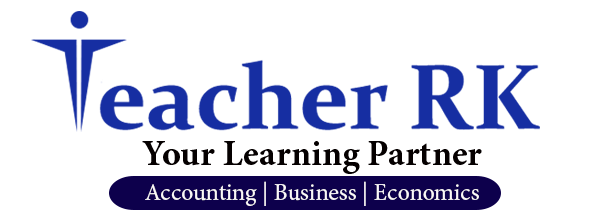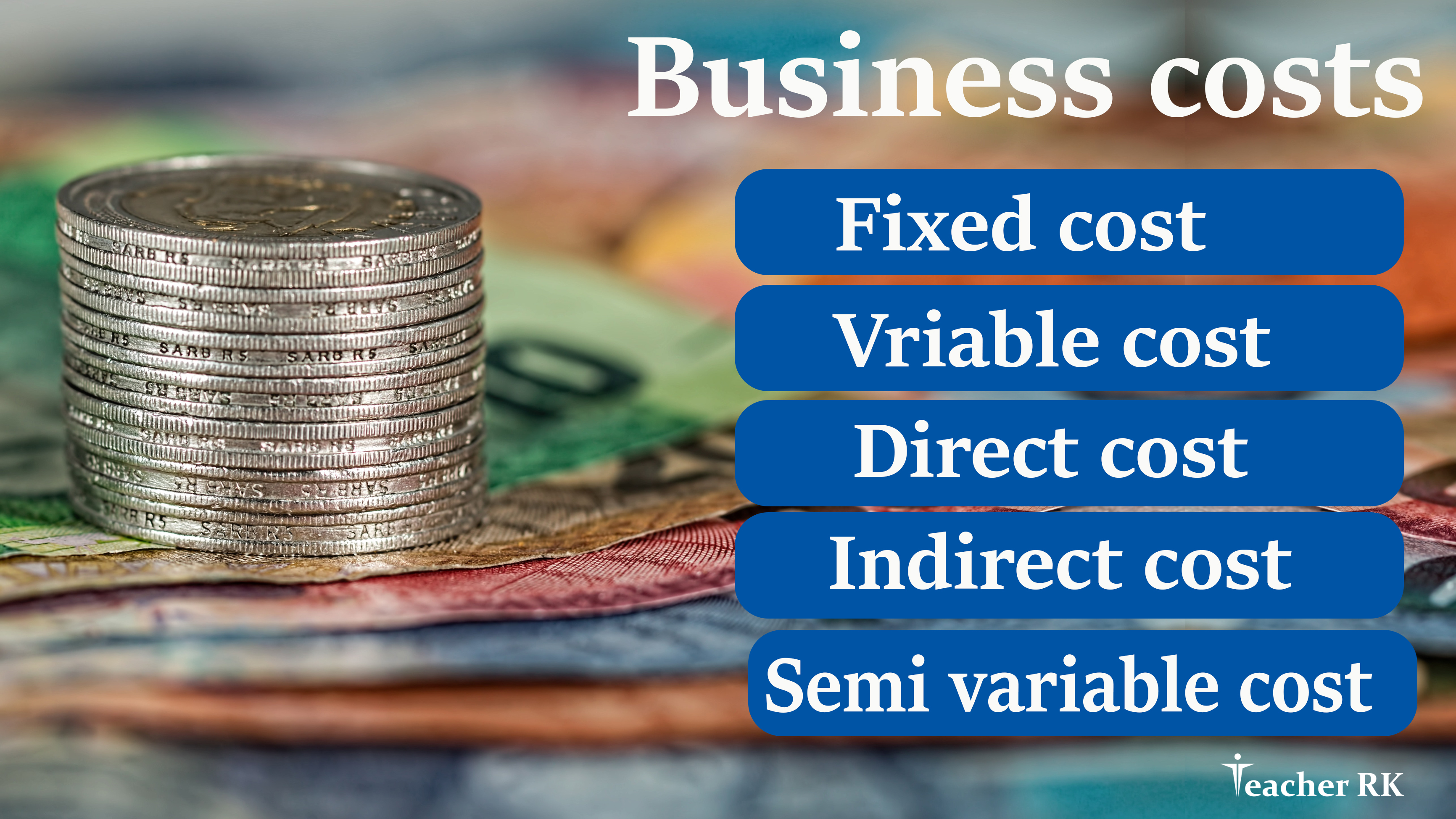Business Costs
In order to generate revenue, every business organization has to incur some money like the cost of goods sold, operating expenses, selling, general and administrative expenses, depreciation, interest expense, and income taxes. Some of these may be fixed amount like monthly rent, manager’s salary, or variable amounts like the cost of raw materials.
![]()
![]()
What is a business cost?
Business cost is the cost that a business incurs in order to produce goods or services. There are three major types of business costs that are incurred by a company. These are fixed costs, variable costs, and semi-variable costs. However, the other classification is fixed cost, variable cost, semi-variable cost, direct cost, and indirect cost.
Types of business costs
Fixed costs
Fixed costs are costs which do not change with the level of production. These are also called overhead costs. Fixed costs include rent, salaries, insurance, interest payments, and other ongoing expenses. These are typically ongoing monthly expenses that do not change with the level of production. These are mostly time related and are usually paid per month, per quarter, or per year. They remain fixed in the short run.
Fixed costs will affect the profitability of a company because they cannot be reduced or eliminated in order to increase profits when there is less production. This means that any time there is less demand for a product or service, the company will not be able to reduce their fixed cost in order to create more profit margins.
Variable costs
Variable costs are the costs that change in direct proportion to the level of production. These include raw materials and direct labour costs. These costs will increase as production increases. For example, if a company produces more sweaters then it will need more yarn and its variable costs will go up.
Variable costs can affect a company’s profitability in many ways. For example, if variable cost per unit is lower than the average revenue per unit then the company will have higher profitability. If variable cost per unit is higher than average revenue per unit then the company will have lower profitability. This is because when variable cost increases, average revenue per unit decreases and vice versa.
Semi-variable costs
Semi variable costs comprise both fixed and variable components. These costs remain fixed for a given level of production, time or consumption, after which these costs become variable when the set level is exceeded. For example, when sales men are paid monthly fixed salary and performance incentives, the monthly salary is firm’s fixed cost and the performance incentive is variable cost. So, put together, it becomes, semi variable cost. Another example would be a monthly rental for phone line which constitutes a firm’s fixed cost, while call charges constitute its variable cost.
Direct costs
Direct costs are those costs that can be identified with the production of specific goods or service. The cost that can be directly attributable to/identified with/ associated with the specific cost centre or cost object like a product, function, activity, project and so on is known as direct cost. Unlike variable costs, direct costs are not directly related to the quantity of goods produced or sold, however, these costs can be traced back to the product.
Indirect costs
Indirect cost is those costs that cannot be directly assigned to/related to/identified with a particular cost centre or cost object, but they benefit multiple cost objects. It is not possible to calculate them for a single cost object. However, it needs to be apportioned over various products as well as among the different departments of the organization. It includes production, office & administration, selling & distribution costs.
Are the direct costs and variable
costs same?
Although direct and variable costs are tied to the
production of goods and services, yet they can have some distinct differences.
Variable costs can fall under the category of direct costs, but direct costs
don’t necessarily need to be variable.
Direct costs are expenses that can be directly
traced to a product, while variable costs vary. Both types of costs are
involved in production.
Let’s us understand business costs with an example.
Excellent Furniture manufacturers wooden and steel furniture for both residential and commercial use. Raw materials for wooden furniture are sourced from the local timber merchant. Steel is sourced from Made to Last steel suppliers. Company uses batch as well as job production methods. Company rented warehouse to store raw materials and finished products. Other monthly expenses include insurance, loan interest, etc. A few workers are paid based on work allotted ( piece rate) There are supervisors and managers who get monthly salary. Sales people get monthly fixed salary and also incentives based on meeting sales target. Some special order furniture requires additional designing machine and equipment. They are leased as and when they are needed.
Fixed costs: Monthly salaries paid to sales people, supervisors and managers, Warehouse rent,
Insurance, and loan interest
Variable costs: Piece rate paid to factory employees.
Cost of raw materials ( wood and steel)
Semi variable cost: Sales people salary + incentives and Factory electricity
Direct costs: Lease cost of designing machine and equipment.
Key words explained
Key words explained
- Fixed costs are the costs that do not change with output, such as rent, utilities, and salaries.
- Variable costs are the costs that do change with output, such as raw materials and wages.
- Semi variable costs comprise both fixed cost and variable cost elements.
- Direct cost – cost that can be identified with the production of specific product or service
- Indirect cost – costs that are not clearly identified with the production of specific product or service.
Conclusion
Both direct cost and indirect cost can either be fixed or variable. In short, we can say that direct costs are those which are used in the production of a single unit of a product, but indirect costs occur in the ordinary course of business and they benefit the entire organization, not to a single product or project. So, in this way these two costs differ.

